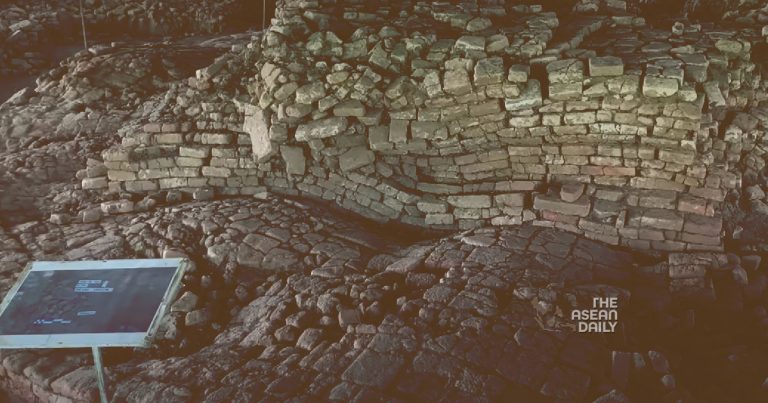2-7-2023 (KUALA LUMPUR) When Professor Mokhtar Saidin purchased a house in Sungai Petani, Kedah, in 2005, little did he know that he was moving close to a site of immense historical significance for Malaysia. Over the years, Mokhtar and his team from Universiti Sains Malaysia (USM) conducted extensive archaeological work at the nearby Sungai Batu site, unearthing evidence of a thriving iron export industry dating back to 788 BC. These findings reveal that Sungai Batu and the larger Bujang Valley complex, of which it is a part, represent the oldest civilization in Southeast Asia.
The Bujang Valley, spanning an area as large as 1,000 sq km on Malaysia’s west coast, holds the remains of a bustling trading port that connected the East and West. With Hindu-Buddhist temples, iron smelting sites, and ancient relics, the valley served as a cosmopolitan hub on the sea route from China to India and Arabia. Mount Jerai, acting as a visible waypoint, guided ships during their three-month stopover, contributing to the spread of religion and the establishment of temples. However, despite its historical significance, archaeological work in the area has stalled since Mokhtar’s retirement in 2021, leaving much of the ancient civilization unexplored.
Mokhtar, the former director of USM’s Centre for Global Archaeological Research, believes that his team has only scratched the surface of what Bujang Valley has to offer. He discovered additional iron smelting sites along the banks of Sungai Muda, which stretches further east to the current border with Thailand. The exploration of these sites could potentially uncover homes, administrative buildings, and further insights into the ancient civilization. Mokhtar hopes that future archaeologists will continue his work and determine the true scale and age of Bujang Valley, emphasizing its importance as part of Malaysia’s natural heritage and identity.
While Mokhtar’s work has shed light on the region’s historical significance, challenges remain in further exploration and preservation. The lack of a successor to lead archaeological research in Bujang Valley has hindered progress. Archaeological work requires funding, as it can take years to excavate fragile artefacts that are thousands of years old. Additionally, the issue of religion poses a challenge in Muslim-majority Malaysia, where some of the sites hold significance for Hinduism and Buddhism.
Efforts to gain recognition for Bujang Valley as a UNESCO World Heritage site are underway. The Malaysian government has allocated funds for developing infrastructure at the Sungai Batu site, hoping to attract tourists and boost conservation efforts. However, according to a UNESCO spokesperson, Malaysia has yet to list Bujang Valley as a potential nomination.
To attract more tourists, Mokhtar suggests utilizing technology, such as creating three-dimensional “holograms” of the ancient structures at Sungai Batu. He believes that investing in Bujang Valley’s tourism potential, similar to the efforts made for Pompeii in Rome, could generate substantial income.
Meanwhile in Indonesia, as the debate surrounding Gunung Padang in Indonesia intensifies, archaeologists at the site continue their research into this potentially revolutionary discovery. Gunung Padang, located on the island of Java, may hold evidence of an ancient civilization predating the Egyptian pyramids. While some experts believe the mountain was constructed by humans as an enormous tomb, others question the validity of the evidence and propose alternative explanations. The Indonesian government has provided significant support to the research effort, but the controversy surrounding the age and origins of Gunung Padang remains.




